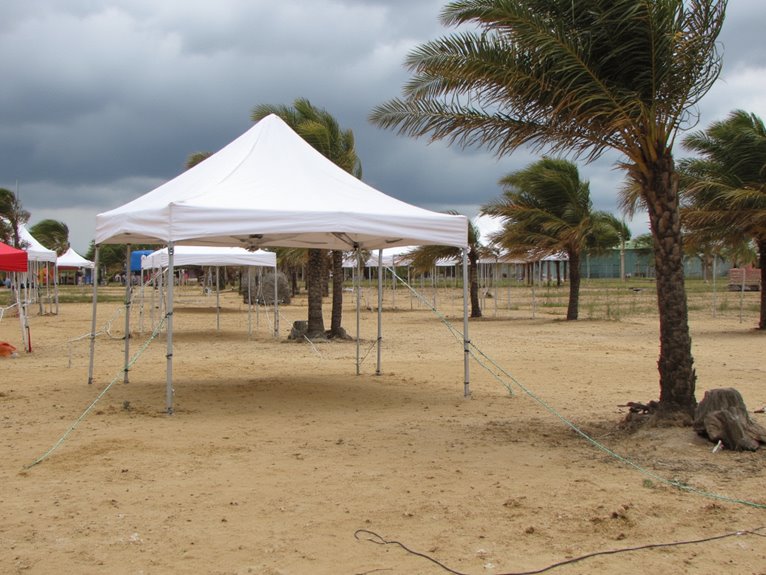How Much Does an Avalanche Backpack Weigh?
Avalanche backpacks typically weigh between 6.6 and 11.2 pounds (3 to 5.1 kilograms), with the average weight being around 8.8 pounds (4 kilograms), due to differences in material, design, and functionality among brands and models. The airbag system, oxygen tanks, and other essential gear and accessories contribute substantially to the overall weight. Brand and model variations, as well as design priorities, also influence the weight. To fully understand the complex factors affecting the weight of an avalanche backpack, one must examine the intricate components and design elements that make up these critical safety devices, revealing a nuanced picture of their construction and functionality.
We are supported by our audience. When you purchase through links on our site, we may earn an affiliate commission, at no extra cost for you. Learn more. Last update on 29th December 2025 / Images from Amazon Product Advertising API.
Typical Weight Range of Avalanche Backpacks
Avalanche backpacks typically weigh between 6.6 and 11.2 pounds (3 to 5.1 kilograms), with the average weight falling around 8.8 pounds (4 kilograms), depending on the brand, model, and features.
The weight variation is largely attributed to the differences in material, design, and functionality among various brands and models.
For instance, backpacks with more advanced features, such as multiple compartments and pockets, tend to be heavier.
On the other hand, minimalist designs with fewer features are generally lighter.
Additionally, the type and quantity of avalanche safety gear carried also impact the overall weight of the backpack.
Understanding the typical weight range of avalanche backpacks is essential for backcountry enthusiasts to make informed decisions when selecting the right gear for their needs.
Airbag System and Its Impact
When considering the weight of an avalanche backpack, the airbag system is a critical component to examine.
The system's weight is comprised of the inflator unit, canister, and bag, with the inflator unit size playing a significant role in overall weight and functionality.
The canister capacity, in particular, has a direct impact on the system's weight and overall performance, making it essential to carefully evaluate these factors when selecting an airbag system.
System Weight Breakdown
The weight of an avalanche backpack can be broken down into its component parts, with the airbag system accounting for a significant proportion of the overall weight.
The airbag system typically consists of the airbag itself, the inflator, and the trigger mechanism.
The airbag material and size contribute to the overall weight, with larger bags and heavier materials adding pounds.
The inflator, which is usually a compressed gas cylinder, also adds weight.
The trigger mechanism, which includes the handle and deployment system, contributes a smaller but still significant amount to the overall weight.
Understanding the weight distribution of the airbag system is essential in evaluating the overall weight of the avalanche backpack.
Inflator Unit Size
In addition to the airbag material and size, the inflator unit size substantially contributes to the overall weight of the airbag system, with larger units typically housing more compressed gas and subsequently adding more weight to the backpack.
The inflator unit size has a significant impact on the overall weight of the avalanche backpack, with variations in size resulting in notable weight differences.
Inflator units with larger volumes of compressed gas result in increased weight due to the added mass of the gas itself.
Larger inflator units often require more complex mechanisms to deploy the airbag, adding to the overall weight.
The size and weight of the inflator unit can also affect the overall ergonomics and wearability of the backpack.
Canister Capacity Impact
Larger canister capacities, which enable the storage of more compressed gas, directly correlate with increased airbag system weights, further exacerbating the overall weight burden of the avalanche backpack.
This is because larger canisters require additional materials and structural reinforcement, resulting in a proportional increase in weight.
For instance, a 300-liter canister may weigh around 1.5 kg, while a 150-liter canister may weigh approximately 0.8 kg.
The added weight of the canister is compounded by the increased weight of the compressed gas itself, which can range from 0.5 kg to 1.5 kg depending on the capacity.
As a result, the overall weight of the airbag system can increase substantially, contributing to a heavier avalanche backpack.
Oxygen Tanks and Their Contribution
When considering the weight and functionality of an avalanche backpack, oxygen tanks are a vital component that warrants scrutiny.
The size and weight of the tank, as well as its oxygen capacity, have a direct impact on the overall weight and usability of the backpack.
Understanding the interplay between these factors is essential for optimizing the design and functionality of the oxygen system.
Tank Size and Weight
The size and weight of oxygen tanks substantially contribute to the overall weight and bulk of the backpack.
Larger tanks, typically holding 3000-4500 liters, weigh around 7-9 kg (15-20 lbs), making them a substantial component of the pack's weight.
Mid-size tanks, holding 1500-2500 liters, weigh approximately 3-5 kg (6.6-11 lbs) and offer a balance between oxygen supply and weight.
Smaller tanks, holding 500-1000 liters, weigh around 1-2 kg (2.2-4.4 lbs), ideal for shorter missions or smaller users.
The weight and bulk of the oxygen tank can significantly impact the user's ability to respond quickly and effectively in emergency situations, as a heavier pack can hinder mobility and increase fatigue.
Oxygen Capacity Impact
The oxygen capacity of an avalanche backpack is directly correlated with the tank size, as each liter of oxygen translates to a specific duration of breathing time, making tank selection a vital factor in determining the overall effectiveness of the emergency response.
A larger tank size does not always guarantee more oxygen, as the pressure and flow rate of the regulator also impact capacity.
For instance, a 3-liter tank at 2000 psi may provide 15 minutes of breathing time, while a 4-liter tank at 1800 psi may only provide 10 minutes.
Manufacturers often specify the capacity of their tanks according to the volume of oxygen delivered at a specific pressure, usually 13.4 liters per minute.
Understanding these specifications is essential to selecting the right tank for your avalanche backpack.
Refill and Replacement
Oxygen tank maintenance is a vital aspect of avalanche backpack functionality, as neglecting to refill and replace tanks can lead to compromised emergency response capabilities. This is especially vital in high-stress situations where every second counts.
Proper maintenance involves regular inspections, cleaning, and testing to guarantee peak performance.
Additionally, it's essential to:
- Follow the manufacturer's guidelines for tank refill and replacement schedules
- Keep a record of maintenance and testing to establish accountability
- Store tanks in a safe and secure environment to prevent damage or tampering
Other Essential Gear and Accessories
When venturing into avalanche terrain, a well-stocked backpack should also contain a range of essential gear and accessories to complement the avalanche safety equipment.
This includes a first aid kit, which should include basic medical supplies, such as bandages, antiseptic wipes, and pain relievers.
An emergency shelter, like a lightweight bivy sack, provides protection from harsh weather conditions.
A reliable means of communication, such as a two-way radio or satellite phone, enables communication with rescue teams in case of an emergency.
Additionally, a repair kit with duct tape, safety pins, and a multi-tool can help with gear malfunctions.
These essential items, while adding weight to the backpack, are vital for ensuring safety and preparedness in avalanche terrain.
Brand and Model Variations in Weight
Different brands and models of avalanche backpacks exhibit significant variations in weight, ranging from 4.5 pounds for the lightweight Ortovox Ascent 30L to 7.5 pounds for the feature-rich Osprey Soelden 32L.
These differences in weight are largely attributed to the materials used, feature sets, and design priorities of each brand and model.
The Arc'teryx Voltair 30L, for instance, weighs in at 5.5 pounds, owing to its rugged construction and extensive feature set.
The Mammut Ride RAS 30L, on the other hand, tips the scales at 5.9 pounds, thanks to its robust build and emphasis on durability.
The Black Diamond JetForce 26L, meanwhile, weighs a relatively svelte 4.7 pounds, reflecting its focus on lightweight performance.
Minimizing Weight Without Compromise
By strategically selecting materials and features, manufacturers can minimize the weight of avalanche backpacks without compromising their functionality or durability.
This is achieved through the use of lightweight yet robust materials, such as nylon or polyester, and the optimization of design elements like compartments and straps.
Additionally, manufacturers can reduce weight by eliminating non-essential features and streamlining the overall design.
For example, some backpacks may forego unnecessary pockets or use lighter-weight buckles and zippers.
By striking a balance between weight reduction and functionality, manufacturers can create avalanche backpacks that meet the needs of users while minimizing their weight.
This approach allows users to benefit from a more comfortable and efficient skiing or snowboarding experience.


